|
By Jeff Thorpe At the beginning of 2024, I helped launch the New Mexico Beaver Project with Chris Smith, the Wildlife Program Director at WildEarth Guardians. The NMBP is working on policy and resources to help restore beavers in New Mexico waterways to save water, recharge aquifers, mitigate flooding and drought, reduce wildfire damage, create aquatic and wetland habitat, and provide more clean, cool water to all life that relies on it - including us. In short, we believe that beavers could be a key to fighting climate change in the southwest, much like this KUNM article that you might have read in last week’s Abiquiu News outlines. If you want to dive deeper, we highly recommend reading Ben Goldfarb’s 2018 award-winning book, Eager: The Surprising, Secret Life of Beavers and Why They Matter, the beaver bible to many of us “Beaver Believers.” Chris and I are well-aware that there are those of you that might consider beavers to be pests. But in these days of increasing wildfires, flooding and extreme weather in New Mexico, we think that adding more beavers into our waterways would be incredibly beneficial in tackling these climate change related issues. There’s a lot of information on our website, but below are just a few benefits of our friend, the beaver. We love chatting with people about beavers, so please reach out if you have questions or comments. And we’d love to come see a dam that might be on your property too! My email is [email protected] Surface water Beavers don’t technically “create” water, but it sure can seem like it. By slowing the flow of water, beavers make more water more available later in the summer and fall. Whether from snowmelt or summer monsoon, water in degraded and eroded watersheds can quickly flow downstream faster than it historically did. With beaver infrastructure slowing things down, water’s journey takes much longer and can keep more miles of waterway more wet later in the year. Groundwater Aquifers are like sponges underground. They store water and act as reserves during drought and dry periods. According to the Environmental Protection Agency, roughly 87% of New Mexico’s public water supply comes from groundwater. Aquifers in New Mexico are declining–especially in the eastern portion of the state. Beaver dams and ponds allow water to seep down through the water table and recharge aquifers. As water slows and collects, it better saturates the ground underneath. So beavers can help us with water supply now and in the future. Water quality and temperature
Beaver dams store sediment and pollutants as particulate matter sinks to the bottom of the beaver pond or is strained through adjacent soils and riparian zones. Beaver dams can filter out unwanted nitrogen, a compound which can lead to overgrowth of algae and oxygen level reductions. So, water coming out of beaver complexes is often cleaner than it otherwise would be. And because beaver dams can help reduce streambank erosion (by slowing energetic, high flows), they even help to clean water downstream. Measuring the impacts of beavers on water temperature is a complicated business. Water temperature is affected by a slew of environmental factors. But, there is reason to believe that in most cases, beavers may lower stream temperatures – especially in hot summers. Beavers usually promote the health and abundance of riparian vegetation – which creates more shade. And beaver complexes often increase groundwater exchange, which can help lower temperatures as well. Wildfire Lush and soggy beaver complexes are proving to be critical to mitigating wildfires. By creating natural firelines, beavers can help stop and slow the spread of wildfires. Joe Wheaton, a geomorphologist at Utah State University says, “It’s really not complicated: water doesn’t burn.” And wetlands and ponds are refugia for plant and animal communities to survive fires and then begin to re-establish throughout the landscape. Among the impacts of wildfires is post-burn flooding. And beavers, by slowing and storing water, can mitigate what can otherwise be a violent–and sometimes dangerous–torrent. Habitat and biodiversity According to the U.S. Fish and Wildlife Service, wetlands make up only 6% of the land on earth, but 40% of all plant and animal species live or breed in wetlands. So, they’re kind of important! And beavers create, maintain, and improve wetlands habitat. Chances are that if you have seen a wetland in New Mexico, it’s where a beaver pond used to be. Wetlands are especially important for birds, reptiles, and amphibians. But nearly any wildlife can be found utilizing wetlands. Beavers are also great at creating and improving aquatic habitat. By complicating waterways, making refugia for prey species, and creating nutrient-rich pools, beavers provide for both aquatic invertebrates and fish species. Beaver ponds can act as veritable fish nurseries and have been found to be especially important to salmonids like trout. Restoration Beavers are our best partner for maximizing on-the-ground restoration work. While humans can do quite a bit of good healing degraded waterways and rehabilitating wildfire-charred landscapes, most of that work can be made much more impactful by the presence of beavers. In many cases, beavers will work faster and better (and much cheaper!) than we can, and unlike most restoration funding sources that limit projects to several seasons at most, beavers will work with stream reaches for decades. This is particularly important in streams that have been deeply entrenched into their historic floodplain and require consistent aggradation over a longer period of time to regain connectivity. Carbon Along with helping to mitigate many of the symptoms of climate change, beavers may also help get at the root cause. Beaver-inhabited meadows are carbon sinks, and can store large amounts of greenhouse gasses. But when beavers leave meadows–or more likely, are removed by humans– science indicates that those meadows may release carbon dioxide rather than store it. The scope of beaver trapping in North America during the height of the fur trade may have had a significant global climate impact.
4 Comments
By Brice Dix, KUNM KUNM It’s a beautiful day in the Jemez Mountains. ' The early summer morning air is crisp – but not cold enough for a jacket – and dead silent. Above, a couple clouds lazily float across the deep blue sky. As our group of 20 or so people clad in waders and hiking gear trudges along a rudimentary path deep in the woods, the ground quickly turns muddy. Soon the path widens, revealing a beautiful meadow lined with walls of tall ponderosa pine. A thin creek divides the land into two. “We’re going to cross the creek and go over to the first set of holes which is, well, either here or there,” said Karen Menetrey from the environmental organization Rio Grande Return. It focuses on restoring damaged ecological systems across the state. The goal today is to plant batches of willows for riparian wildlife – especially, the beaver. The willow is usually seen as a “pest” species, but it plays a vital role in beaver survival, providing food and shelter in the winter. It’s also the construction material for the dams they create. Volunteers place bundles of pre-cut stems into 3-foot-deep holes underneath the water table. They trim any leftover leaves and throw water into the hole. Then, they use long sticks to tamp dirt into and around the hole – mainly to avoid any air bubbles. Menetrey said widespread trapping in the 1860s and 70s in New Mexico nearly decimated the beaver population. Historically, beavers in the U.S. were killed for their fashionable pelts and unique scent glands typically used in perfumes or food flavoring. “And they are extirpated from some watersheds,” Menetrey said. “Which means they’re not extinct, but they are gone from that particular area.” An estimated 6,000 to 12,000 beavers exist in New Mexico right now, but Menetrey said exact counts don’t exist. Currently, Defenders of Wildlife is working on a beaver “census” of sorts to identify dams using aerial photograp All of this work to reintroduce the beaver back into New Mexico’s streams and rivers is part of a larger push to combat climate change here in the Southwest.
“They're really like climate resilience superheroes and super engineers,” said Chris Smith, the brain behind a newly launched venture dubbed the New Mexico Beaver Project. Smith’s vision is to reestablish the widespread benefits beavers and their dams had on New Mexico’s landscapes before commercial trapping, like ecological watershed maintenance. Plus it’s free charge because, well, beavers aren’t motivated by dollar signs. “We have all these vacant waterways, and they could be repopulated by beavers, but we currently don't have a relocation and restoration program,” Smith added. New Mexico doesallow the trapping of beavers, but only in certain areas at certain times of the year. Nowadays, tens of thousands of beavers are still snared, trapped, or shot across the country every year. The Department of Game and Fish has tried its hand at some relocation and reintroduction efforts, namely at Bandelier National Monument. In 2014, the New Mexico Senate passed a memorial requesting a beaver restoration plan from the Department of Game and Fish. They never got one. The state does have some guidelines that make it fairly difficult for beaver relocation to happen – namely the five-mile upstream, five-mile downstream protocol, mandating all landowners within that radius give their explicit written consent for beavers to live there . With a recent massive windfall of state revenue from the oil and gas industry, Smith wants some of that money to be set aside specifically for beavers to increase the state’s resilience to climate change. “Beavers, I think, are one of the most cost effective ways to do that,” Smith said. “There's a budgetary reason to do it.” In addition to helping with floods, beaver dams improve water quality, remove pollutants, and, surprisingly, help fight wildfires. Emily Fairfax studies riparian beaver ecohydrology at the University of Minnesota’s Department of Geography, Environment, and Society. “When beavers fight wildfires, that's actually sort of the last step of the number of disasters that they're helping us mitigate,” Fairfax said. Fairfax says some people may see beavers as a “nuisance,” because they may chew on a property owner’s favorite tree, or accidentally flood a field or road. But, she said the pros outweigh the cons. The semi-aquatic rodents are really good at slowing down and storing water in the ground during storms and runoff seasons, she said. That allows water to be available to plants during droughts. “Throughout the whole year, beavers are manipulating the hydrologic cycle in a way that builds up defense to a whole suite of natural disasters, and the wildfire really matters, because that's one that we struggle to manage ourselves,” Fairfax said. These engineering marvels are pivotal to the survival of other species during a wildfire as well. Fairfax said beaver wetlands are too lush and wet to burn – providing a crucial fire break, slowing the blaze down. “A single beaver family can engineer acres and acres and acres of these fireproof patches,” Fairfax said. “They are the safe place in the landscape, and we need more of it.” Fairfax and Smith said the challenge is to overcome societal perceptions that beavers are merely obnoxious, toothy rodents and teach people that the beaver is much more valuable than a perfume ingredient or a fancy hat. Story and Images Courtesy of Georgia O'Keeffe Museum New and familiar faces joined forces for the Georgia O’Keeffe Museum’s 11th annual Abiquiú Garden Project. Under the guidance of Agapita (Pita) Lopez, Projects Director of Abiquiú Historic Properties, Project Coordinators Josephine Dominguez, a former garden project intern herself, and Randy Garcia helmed the yearly undertaking of planting, tending to, and harvesting the beloved garden filled with the favorite foods of Georgia O’Keeffe. This year, three interns returned with two first-time interns who combined their experience and new ideas for a successful growing season. The project allows for Northern New Mexico high schoolers to care for the garden, learning how one’s natural surroundings can play an instrumental role in fostering a healthy lifestyle, while also learning about the historic and artistic legacy of the community in which they live. Through this process, the interns gain an understanding and appreciation for the land and edible subject matter that O’Keeffe often represented in her paintings, as well learn about her keen work ethic and attention to detail. Andrea is a junior at Los Alamos High School. In her free time, she enjoys playing volleyball, softball, and riding horses. Family is important to Andrea, she has three brothers who are her best friends and she enjoys babysitting her cousins when not working. Her favorite part of the summer has been being outside and enjoying the apricots, blackberries, and figs. Art student Jazmine Dominguez plans to get her degree in graphic design and art history after graduating from Española Valley High School in 2026. When she’s not in classes, she is painting, drawing, and creating her own manga—a type of Japanese graphic novel. She also enjoys taking walks with her dogs. Gabriel attends Española Valley High School and returned to the Garden Project for a second year. He enjoys working at the Home & Studio because of the short morning commute, although he lives closer to Ghost Ranch than Abiquiú! In his free time, he likes to play guitar, tinker around with engines, and help on his family ranch. Luke earned his high school diploma through home schooling and returns as a Garden Intern for his third and final year. He is active with the Abiquiú Volunteer Fire Department and plans to pursue firefighting full-time. He is also an intern with the Northern Youth Project and works part-time at his family’s food stand in Abiquiú. In his spare time, Luke enjoys working out and playing video games. “Nate” is from Abiquiú and will be a senior this year at Española Valley High School. Outside of the garden, Nate is a competitive bowler and recently traveled to tournaments in Chicago and Minneapolis. He also plays basketball and golf. He has enjoyed his time in the garden, where his great grandfather, Esteban Suazo, also worked for Georgia O’Keeffe when she was alive.
The harvesting has begun! Peas, apricots, and blackberries are already in season. Follow along with the garden’s progress on the live stream on our website at this link. By Sara Wright
Image Credit: Sara Wright I love butterflies and have always grown perennials that are good pollinators because they attract bees and butterflies as well as providing nectar for my hummingbirds. I also have milkweed plants growing in every open area on my property, and up until recently, used to raise a monarch or two from caterpillar to chrysalis to adulthood. Now that these butterflies are scarce, I no longer do. This year I note that I am seeing fewer butterflies in general, much to my dismay. A couple of exceptions are swallowtails and fritillaries. All summer long I have been entranced by the number of fritillaries that have been fluttering through my garden since early May. Such abundance, when so many butterflies are disappearing! The days of taking any wild creature for granted are over for me, and that includes the insects I see. After identifying the first fritillary that visited my garden as the Great Spangled Fritillary I began noticing others; some visit a meadow across the road. Over the course of the summer, I have also seen the Meadow, Aphrodite, and Atlantic varieties. The Great Spangled fritillary is my favorite, but I am a walking welcome mat for all that choose to visit! Fritillaries are a large group in the butterfly family with many species that inhabit this country. All have tiny front legs that lack claws, thus the phrase used to describe them is ‘brush-footed’ butterflies. Fritillaries are medium – to large in size (wingspan can be as much 3 and ¾ inches) and their wings are bright orange or somewhat rust colored (depending upon the species) all with spots and wavy black lines. Since most fritillaries look somewhat similar it is necessary to examine wing patterns closely, something I never did until recently. For example, fritillaries look a lot like Checkerspot and Crecent butterflies so it’s important to check some resources to be sure what you are seeing. There are excellent photos online that are well worth looking at. So much variation and such astonishing hues and patterns! Fritillary caterpillars vary in color depending upon the species, but most feature 6 rows of branching spines that go all the way down their two-inch bodies. They are somewhat unfriendly looking to me! Their life cycle is similar to most butterfly species with egg, larval, pupal, and adult stages. The adults are active all summer long until September. Presently they are feasting on masses of scarlet bee balm, butterfly weed, and soon my old-fashioned hydrangea will claim the rest. All my plants and flowers are blooming about a month early, so I don’t know what is going to happen next. Butterflies need their nectar and host plants to coincide. Most species overwinter as larvae (wrapped in debris/ old leaf matter) and emerge in early spring as caterpillars that only eat violets. No violets, no fritillaries. Some fritillaries are endangered. Let’s hope that Maine Governor removes violets from the invasive species list. The last thing we need is the loss of another butterfly. Fritillary adults and caterpillars are still ‘relatively’ common in mountain meadows, fields and other weedy areas. The Great Spangled fritillary, the one I see the most, has a Latin name that means Mountain or Earth Mother. They are the most frequently seen species inhabiting Northern and Eastern states. Let’s please do everything we can to keep them around! The adult’s mate in the summer; afterwards the females take a nap for a few weeks (diapause). In late summer or fall they lay their eggs in patches of violets. Female Great Spangled fritillaries seem to be able to find the violets even after they have wilted. It is possible that they can smell their roots. The caterpillars emerge to feed when the violet plants are young and tender in early spring. Timing is important to the hungry caterpillar. It is feared that global warming may disrupt this synchronization; this would prove catastrophic to fritillary caterpillars. Studies are underway to verify whether this is already taking place. Because the caterpillars feed only on violets, it is helpful to have carpets of them (which I refuse to have cut in either spring or fall – basically I live in a woodland jungle) I wonder if this is why I have so many of these butterflies? The adult butterflies feed only on flower nectar. Around here they love butterfly weed, milkweed blossoms, white phlox, bee balm and hydrangeas Joe Pye weed, black eyed susans, wild thistle (also on invasive plant list) Purple coneflower are other favorites. They do not hesitate to visit lilacs and butterfly bushes either. Because I spent four years in Northern New Mexico where I also kept a flower garden, I saw the Great Spangled fritillary a number of times especially around the milkweed I planted under the drain-pipe (it spread). They also flocked to blue flax. Oddly they also visited my nasturtium patch, a practice i have not seen repeated here. When I checked a number of sources, I learned that New Mexico has its share of fritillaries too – many more species than we have in Maine – The Great Spangled fritillary was one, although it’s a bit smaller in size. Others included the Aphrodite, Edwards, and Southwestern fritillaries. What a diverse family of butterflies. I am thoroughly hooked! Most of these fritillaries live in wet mountain meadows where they can find violets on which to lay their eggs. Sante Fe is only an hour away and those forests have many wild violets, so it is possible to see them just about anywhere. I don’t recall seeing fritillaries in the fall in Abiquiu. The adults are quite fond of blue flax. If i ever spend another winter there I would also grow violets in the hopes of attracting some over the summer. Once the violets or pansies (also members of the violet family) have bloomed even if they droop and seem to die leave them. The fritillaries can apparently smell the roots of violets and will find some to lay their eggs on. I would love to know who else has seen these gorgeous butterflies. With so many insects disappearing at an alarming rate I am hoping that folks that read this article will consider buying pansies or adding wild violets to their desert gardens so we give these beautiful butterflies what they need doing everything we can to keep them around! A new court ruling allows Animal Protection Voters New Mexico and Española Humane to actively participate in defending Senate Bill 57 throughout the litigation process. Photos by Mattie Allen/Española Humane Three months ago, Animal Protection Voters and Española Humane united to file a motion to intervene in a lawsuit brought by the pet industry challenging Senate Bill 57, a crucial affordable spay/neuter law passed in 2020.
We are thrilled to announce that Honorable Judge Matthew Wilson granted our motion to intervene at a hearing on July 16. Following 30 minutes of oral arguments, Judge Wilson swiftly ruled that APV and Española Humane have legal standing and the right to intervene in Pet Food Institute et al. v. Michelle Lujan Grisham et al. The judge emphasized the case's significant public importance, allowing us to actively participate in defending Senate Bill 57 throughout the litigation process. This milestone empowers us to bolster the state's defense and present our own compelling legal arguments in support of maintaining Senate Bill 57. This important law, on the books now for four years, is poised to allocate vital spay/neuter funds to New Mexico communities urgently in need. Successfully clearing this legal hurdle marks an essential first step in safeguarding New Mexico's affordable spay/neuter law. The lawsuit's outcome will resonate beyond our state, impacting similar legislation nationwide. While the road ahead may be lengthy, we remain committed to expeditiously advocating for a favorable resolution. We will provide updates as the case progresses through the courts. Your continued support is invaluable during this critical time. Join us in championing spay/neuter and protecting animals with a donation. Every contribution makes a meaningful difference. Co-Curators Dr. Norman Doggett and Dr. Matthew Martinez
Exhibit continues thru October 31, 2024 Bond House Museum Española, NM Over the last twenty-five years the Mesa Prieta Petroglyph Project has worked diligently for the protection and preservation of the cultural landscape of the northern Rio Grande Valley region. There are well over 100,000 petroglyphs that encompass a vast timeline from Archaic periods through Spanish contact and 20th century influences. In addition to ancestral petroglyphs, Mesa Prieta includes numerous archaeological features such as grid gardens and historic trails that are interwoven in the Valley’s histories. This exhibit includes photography by Norman Doggett and other materials that highlight the histories, traditions, and archaeological features of the region. We invite visitors to learn more about the education mission of the Mesa Prieta Petroglyph Project and to further engage with this special place known as Mesa Prieta, Tsikwaye to the Tewa people. Exhibit hours are every Wednesday, Friday and Saturday from 12:00 to 4:00pm. The Bond House Museum also features a permanent exhibit detailing the grand history of the Española Valley area. Admission is free. Donations are welcomed. The Bond House Museum is located at 706 Bond Street, Española NM 87532. For more information: 505-747-8535 or email [email protected] Partial funding was granted by the County of Rio Arriba Lodger’s TaX. By Zach Hively This poem has never been published in the formal sense. Never in a book, a journal, a magazine. But it means something to me, something maybe that stems from the time I first wrote it, or the way I’ve seen people interact with it. And I do see people interact with it, more than any other poem of mine. Because, while it hasn’t been traditionally published, it’s a poem I’ve put into the world a few other ways. It took me a while to realize that poetry could exist in ways outside of books and classrooms and poetry readings. This clicked, or started to, when a dear friend asked me for some work to hang in her art gallery. Words in an art gallery? This meant words had to become visual, somehow. Even tactile. This, I could wrap my head around, because already I prefer working with poems on actual paper—first handwritten, then typewritten. This forces me to consider the poem as an actual thing, not an easy-to-tweak concept on a screen. Edits happen on paper. So do new thoughts. Then, the poem gets typewritten again. Inviting in more tactile elements from this place was pretty inevitable, really. You can snag some poems like this at the Casa Urraca Press stop on the Abiquiú Studio Tour in October.
Maybe this is why the poem hasn’t (yet) appeared in a printed-and-bound book: the rocks, I have to think, would appreciate being presented with flowers and glass. ________________________________________ Here’s the Thing with Rocks They become who they are by wearing themselves away. That is the only way for them to uncover what they’re made of. You can walk right by the rocks that are greeting you. But if you stop, try to notice how they are catching their breath for a time. Erosion is perilous work, and they are right where they are meant to be, until they return to the business of making sand. ________________________________________ Zach’s Substack is free. The free stuff today will remain free tomorrow. Someday, he might offer additional stuff. Zach+, as it were. You can tell Zach that you value his work by pledging a future paid subscription to additional stuff. You won't be charged unless he enables payments, and he’ll give a heads-up beforehand. Pledge your support I’m not going to get into all the ways Australia and New Zealand are different from everywhere else in the world. And Tasmania is part of that too. I want to talk about a specific animal, the Tasmanian Tiger. Read an article about it HERE. While distinct from the Tasmanian Devil, in an important aspect that the Devil is still alive, the last Tasmanian Tiger dies in 1936, in a zoo. The last wild Tasmanian Tiger was shot and killed in 1930. I’d hate to be that guy, sort of like the 14yo kid that shot the last American Passenger Pigeon. Like the woolly Mammoth, there are apparently efforts to bring back the Tasmanian Tiger using DNA and cloning. Did I mention that both the male and female of the species have pouches? The Tiger and Devil are relatives. The Tasmanian Devil still exists today and seems to have an appropriate name. It looks cute, kind of like a baby black bear, except for those teeth. As For Tasmanian Devils, read about them HERE.
The Tasmanian Devils are also a fascinating animal. While extinct on mainland Australia for millennia, they have been re-introduced to save the species from extinction. It seems that the Devils in Tasmania have been ravaged by a cancer that is transmitted through a bite. Yet another weird thing going on down there. If you’re anything like me, you’ll find this strange and useless information interesting. If not, then you can ignore it and move on. By Bryce Dix, KUNM News It’s a beautiful day in the Jemez Mountains. The early summer morning air is crisp – but not cold enough for a jacket – and dead silent. Above, a couple clouds lazily float across the deep blue sky. As our group of 20 or so people clad in waders and hiking gear trudges along a rudimentary path deep in the woods, the ground quickly turns muddy. Soon the path widens, revealing a beautiful meadow lined with walls of tall ponderosa pine. A thin creek divides the land into two. “We’re going to cross the creek and go over to the first set of holes which is, well, either here or there,” said Karen Menetrey from the environmental organization Rio Grande Return. It focuses on restoring damaged ecological systems across the state. The goal today is to plant batches of willows for riparian wildlife – especially, the beaver. The willow is usually seen as a “pest” species, but it plays a vital role in beaver survival, providing food and shelter in the winter. It’s also the construction material for the dams they create. Volunteers place bundles of pre-cut stems into 3-foot-deep holes underneath the water table. They trim any leftover leaves and throw water into the hole. Then, they use long sticks to tamp dirt into and around the hole – mainly to avoid any air bubbles. Menetrey said widespread trapping in the 1860s and 70s in New Mexico nearly decimated the beaver population. Historically, beavers in the U.S. were killed for their fashionable pelts and unique scent glands typically used in perfumes or food flavoring.
“And they are extirpated from some watersheds,” Menetrey said. “Which means they’re not extinct, but they are gone from that particular area.” An estimated 6,000 to 12,000 beavers exist in New Mexico right now, but Menetrey said exact counts don’t exist. Currently, Defenders of Wildlife is working on a beaver “census” of sorts to identify dams using aerial photography. Willow planting for beavers All of this work to reintroduce the beaver back into New Mexico’s streams and rivers is part of a larger push to combat climate change here in the Southwest. “They're really like climate resilience superheroes and super engineers,” said Chris Smith, the brain behind a newly launched venture dubbed the New Mexico Beaver Project. Smith’s vision is to reestablish the widespread benefits beavers and their dams had on New Mexico’s landscapes before commercial trapping, like ecological watershed maintenance. Plus it’s free charge because, well, beavers aren’t motivated by dollar signs. “We have all these vacant waterways, and they could be repopulated by beavers, but we currently don't have a relocation and restoration program,” Smith added. New Mexico does allow the trapping of beavers, but only in certain areas at certain times of the year. Nowadays, tens of thousands of beavers are still snared, trapped, or shot across the country every year. The Department of Game and Fish has tried its hand at some relocation and reintroduction efforts, namely at Bandelier National Monument. In 2014, the New Mexico Senate passed a memorial requesting a beaver restoration plan from the Department of Game and Fish. They never got one. The state does have some guidelines that make it fairly difficult for beaver relocation to happen – namely the five-mile upstream, five-mile downstream protocol, mandating all landowners within that radius give their explicit written consent for beavers to live there . With a recent massive windfall of state revenue from the oil and gas industry, Smith wants some of that money to be set aside specifically for beavers to increase the state’s resilience to climate change. “Beavers, I think, are one of the most cost effective ways to do that,” Smith said. “There's a budgetary reason to do it.” In addition to helping with floods, beaver dams improve water quality, remove pollutants, and, surprisingly, help fight wildfires. Emily Fairfax studies riparian beaver ecohydrology at the University of Minnesota’s Department of Geography, Environment, and Society. “When beavers fight wildfires, that's actually sort of the last step of the number of disasters that they're helping us mitigate,” Fairfax said. Fairfax says some people may see beavers as a “nuisance,” because they may chew on a property owner’s favorite tree, or accidentally flood a field or road. But, she said the pros outweigh the cons. The semi-aquatic rodents are really good at slowing down and storing water in the ground during storms and runoff seasons, she said. That allows water to be available to plants during droughts. “Throughout the whole year, beavers are manipulating the hydrologic cycle in a way that builds up defense to a whole suite of natural disasters, and the wildfire really matters, because that's one that we struggle to manage ourselves,” Fairfax said. These engineering marvels are pivotal to the survival of other species during a wildfire as well. Fairfax said beaver wetlands are too lush and wet to burn – providing a crucial fire break, slowing the blaze down. “A single beaver family can engineer acres and acres and acres of these fireproof patches,” Fairfax said. “They are the safe place in the landscape, and we need more of it.” Fairfax and Smith said the challenge is to overcome societal perceptions that beavers are merely obnoxious, toothy rodents and teach people that the beaver is much more valuable than a perfume ingredient or a fancy hat. By Jessica Rath When Janice and Michael Quinn bought their property in Rio Chama near Medanales, they were quite intrigued by the strange and decidedly unique structure which was part of it: a small building without any straight lines. It looked like something that had grown out of the earth, with undulating curves, bulbous outcrops, round and colorful windows. It had been abandoned for a while and wasn’t in great shape; raccoons and other critters had moved in. Janice and Michael didn’t know much about who built it, but one thing was certain: it was something special that deserved to be restored. The Quinns started on a Sherlock-Holmes-inspired journey. Talking to neighbors and former residents, they managed to piece together the story of the original owner and builder of the Hobbit Hut, a man every bit as eccentric and colorful as the building: Franklin MacFie. An artist, musician, actor, performer, who single-handedly built the free-form house all by himself. Well, people helped him, neighbors and friends. But he designed and planned the dwelling all by himself, although he wasn’t an architect. I figured this would make a fascinating story for the Abiquiú News, and the Quinns kindly agreed to give me a grand tour of the Hut. Michael had been hard at work for weeks and months (“forever”, Janice corrected), sealing the roof which had several water leaks and renovating each room, to make it habitable. But first of all they shared some great news with me: on June 14, 2024, the Cultural Properties Review Committee listed the Franklin MacFie House in the State Register of Cultural Properties and recommended that the nomination be forwarded to the Keeper of the National Register for listing in the National Register of Historic Properties. With the help of New Mexico’s State and National Register Coordinator Steven Moffson, Janice and Michael had filled out a lengthy application to have the Hobbit Hut formally recognized as a site of historic relevance. If you’re interested, here is the link to the nomination; it has a lot more information than I could fit into this article. Why did they apply for this? I wanted to know. “Frankly, it just seemed like a good idea”, Michael told me. “I don't even remember how I discovered that we could apply – just looking around the internet, I guess. What do we hope to get out of it? We hope to get a plaque”, he laughs. “And then maybe some financial and professional help. Because we do everything ourselves. And we pay everything with cash, so it takes a long time. I think my primary goal is to preserve the building, and make sure that it stays a stable, viable building into the future when we’re gone”. One reason why the site is historically relevant may be the fact that it was built with a unique construction technique: Ferrocement. It’s a composite material which uses a skeletal framework of steel rods which is then covered by fine-meshed chicken wire and burlap, and lastly plastered with a layer of cement mortar. Although this is only between 1 3⁄4 and 2 1⁄2 inches thick, it’s an extremely strong shell: Michael claimed that one could drive a car on top of the roof, and it would not cave! Whether that’s indeed possible I have no idea, but a number of Franklin’s friends have been documented dancing happily on the roof. I got a better insight into the way Ferrocement was used when Janice and Michael took me on a tour of the house. The most pressing part of the work to be done is fixing the leaks, Michael explained. “This mesh makes Ferrocement work”, Janice added. “That's why it doesn’t have to be heavy concrete but can be thin. So this whole thing is made out of rebar, chicken wire, burlap, and Portland cement. It’s a wonderful way to build actually, and it's waterproof. They still have ships that the hull is built out of Ferrocement. There are huge stadiums in Europe which are built of Ferrocement. It's amazing, eco-friendly stuff”. Ships? Built with cement? This sounded somewhat counterintuitive (and I have to admit that I’m rather clueless as far as engineering is concerned). But sure enough, there’s even a Wikipedia page about Concrete Ships, click on the link for some interesting images. And here you can find some other amazing buildings made of Ferrocement. From the outside, it looked as if this would be some dark, cavelike abode. But once we stepped inside, I was surprised to see how light-filled and airy the house was! From the entrance, the living areas undulated in every direction, sloping down naturally, following the hillside. There were no straight lines anywhere, and the few dividing walls all had arches and openings. The house looked alive, breathing, moving, changing. I was utterly enchanted. Janice pointed to the ground: “All of this was dirt, which got muddy whenever it rained. Michael worked hard to install concrete floors; that was one of the first things he did”. Next, we looked at the kitchen, and Michael showed me everything that had been done so far, and his many future plans. “The electricity is here for a refrigerator; and there is a sink with a cabinet; and cabinets over there are on the backside of a closet which will be in the bathroom. There will be chairs here and a breakfast table. So, we could rent it out for a couple of months in the Summer; I have plans to put in a mini split system for heating and air conditioning”. “The bathroom will have a shower right here, a toilet there, and the sink, and the washer and dryer will be here, and a water heater”. By this time, after walking through different rooms and getting a better sense for all the amazing details – there were so many windows, for example, and every one was unique and different, some round, some arched, some colored glass church windows – I wanted to learn more about the man who built this. Franklin MacFie. I asked Janice and Michael how they learned about him, and what they learned. Janice told me: “We loved the Hut at first sight, and asked our neighbor Dean Jeffers who lives below the ditch to the south, what he knew about it. From him and another neighbor (Reynel Maestas, the one whose grandmother had owned all these properties), we heard lots of stories. Dean told us that Franklin had moved to Portugal to nurse his partner Jean Michel Belluc who died of AIDS. And that Franklin had died soon after that! That’s why Michael was so surprised to see a very much alive Franklin at our door in 2008!” They had met him! How exciting! I wanted to hear all about it. Michael had quite a story to tell. “We were sitting in the hot tub. And it was the time of year when the moon comes up and projects light out of all the windows and auto tail lights in the Hut. And we were thinking, ‘It's the spirit of Franklin’. The next morning I was home alone, and there was a knock at the door. And there's Franklin with one of his friends from Santa Fe, and the lady from Portugal”. Michael had told me earlier that Franklin had built a round cement and adobe addition to a house in Portugal (he traveled all over the world), and that he had wanted to show his friends from Portugal the house he had built much earlier in New Mexico. So this was that visit. “I opened the door and there's this guy and says ‘Hi, I'm Franklin MacFie’. I couldn’t believe my eyes! ‘Franklin MacFie! The rumors of your demise have been greatly exaggerated!’ was all I could say. He thought that was funny, and he explained that he was here with friends and he wanted to show them the hut. And if it was okay. I said, of course it's okay. Do you mind if I come along? And so we walked down there”. “They weren't here for very long, I don't think they had much time. But that's when the picture of Franklin and me by the window was taken”. “So that was my first connection with Franklin, before I knew anything about him. I didn't know he was sick at the time. I didn't know anything about him, except that he built that place. Which meant a lot to me. Many years later Carol Bondy was here and we talked about the Hut and Franklin. She did some research and found the WordPress website. And that's when we started learning all about Franklin's eccentricities, his life and accomplishments”. He died shortly after this visit. Please take a look at the site if you want to learn more about Franklin MacFie. It’s a memorial put together by some of his lifelong friends, celebrating the artist, film maker, world traveler, theater director (he organized the Espanola Valley Theater where he worked with teen drama students and played in “Bye, Bye Birdie” in Santa Fe in 1978), an altogether gifted and brilliant man who lived in New York City, San Francisco, New Mexico, Morocco, Turkey, Portugal, and lots of other places. I guess it’s more a labor of love and less of an organized historical document, but somehow this is totally fitting for Franklin’s character. Janice told me another funny story, which she and Michael heard from Ray Stevens, a life-long friend of Franklin’s.
“Franklin and his partner Jean Michel, who was French, wanted to make Camembert cheese. And they had a cow. Jean Michel called somebody up in Wisconsin who made cheeses and who also happened to be French. The story goes that they just talked fluidly in French for like 30 minutes on the phone, and Jean Michel got the recipes. And so they started making Camembert cheese. Jean Michel would go to Santa Fe, with his rounds of Camembert cheese and in scantily cut off leather shorts and sell them to restaurants in Santa Fe”. “And Ray told us that sometimes the cheese wouldn't sell and they would bring it back and mix in some herbs and things, reformat and go back to town to try to sell it again, for even more money!” Isn’t it strange to have such a strong connection with another person's life? To gradually learn more details about a unique, creative, and rather eccentric individual? Some people might think that the Franklin MacFie House is too weird and unconventional and not worth saving. I applaud the Quinns for recognizing Franklin’s vision and for putting so much effort into the preservation of the building. They see and understand its beauty. I hope they’ll get some funding so that they can finish this labor of love sooner, rather than later. If you have questions about the Hobbit Hut, or have personal stories to share, please email [email protected]. And thank you so much for showing me around, Janice and Michael – I’m glad I could learn something about Franklin and his original spirit. |
Submit your ideas for local feature articles
Profiles Gardening Recipes Observations Birding Essays Hiking AuthorsYou! Archives
October 2025
Categories
All
|

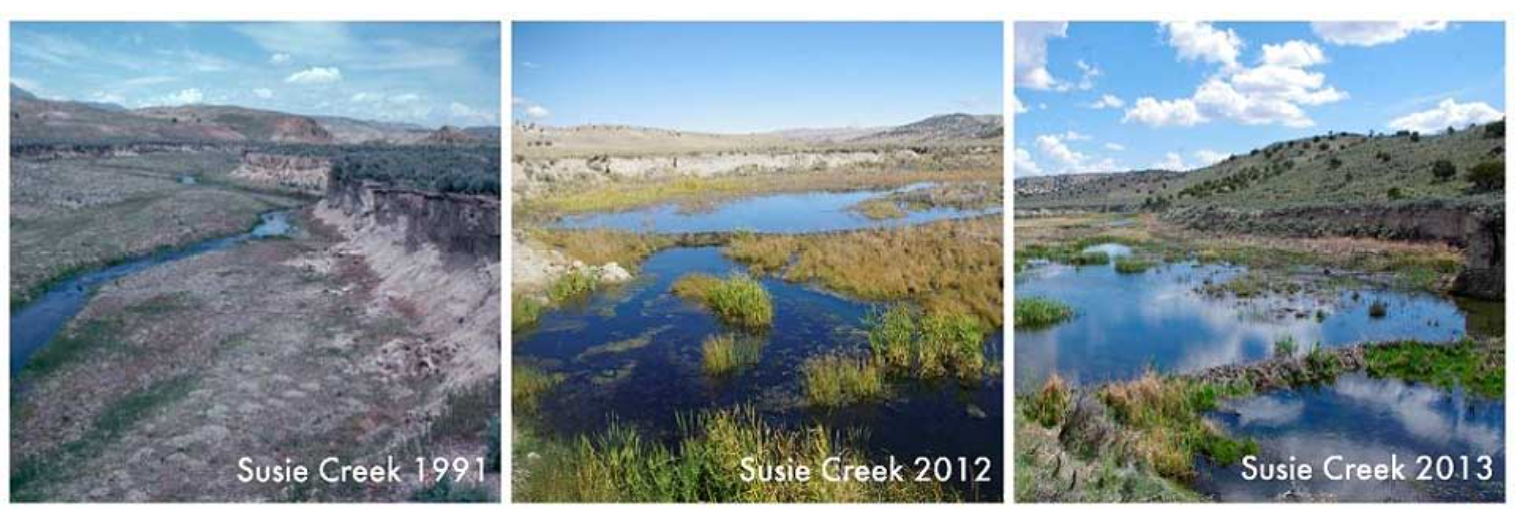

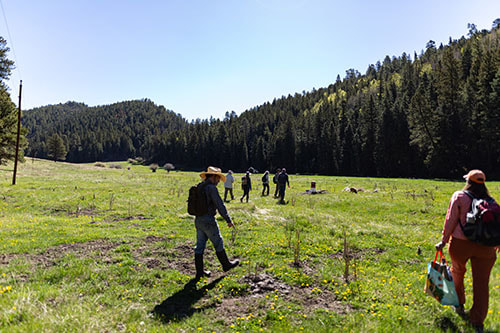






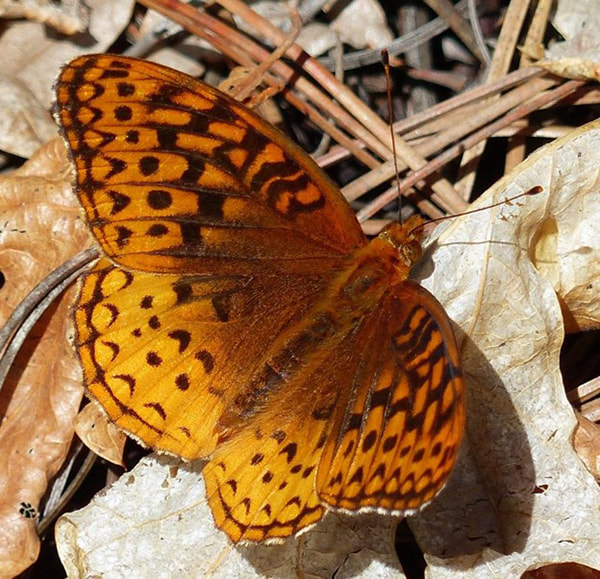



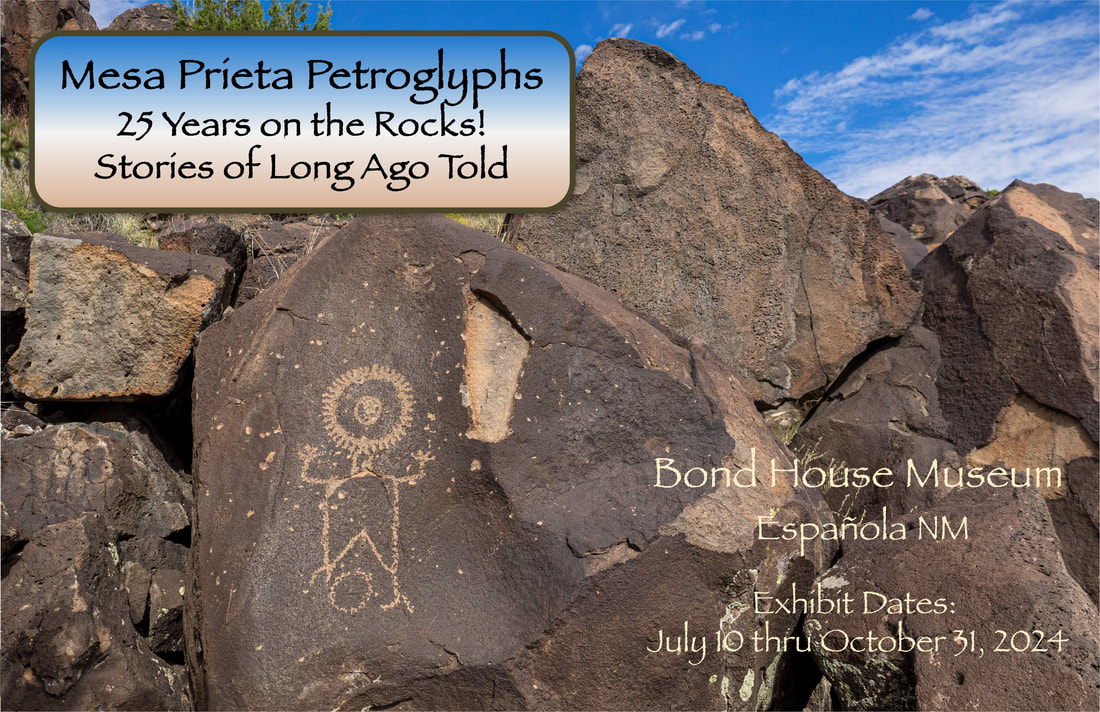

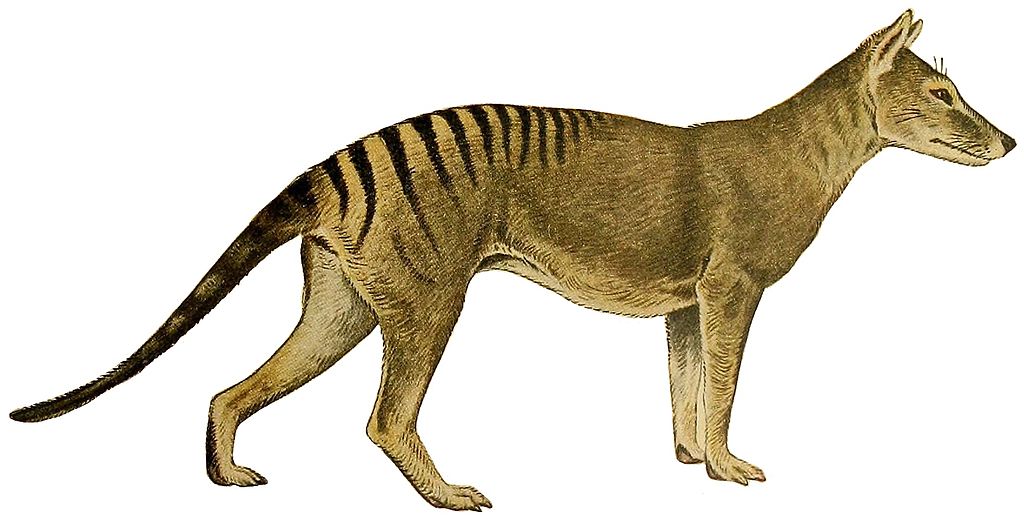



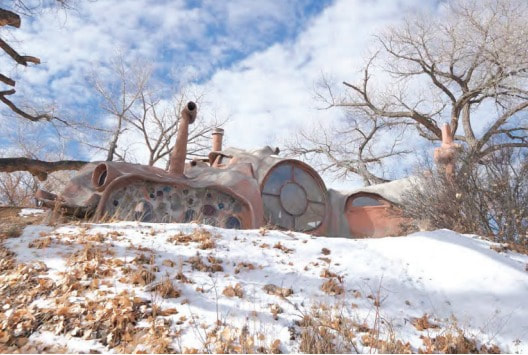
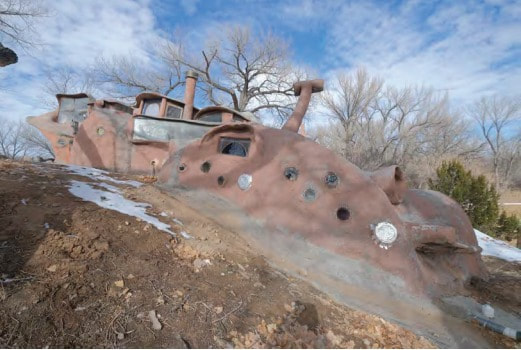

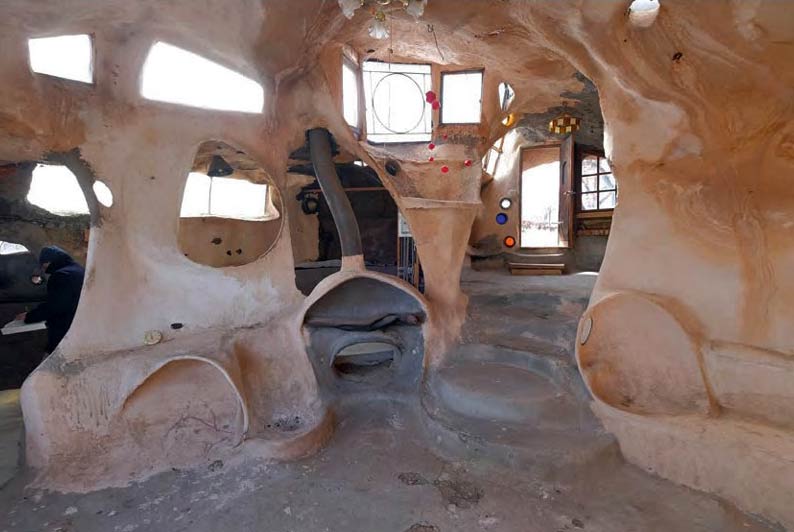
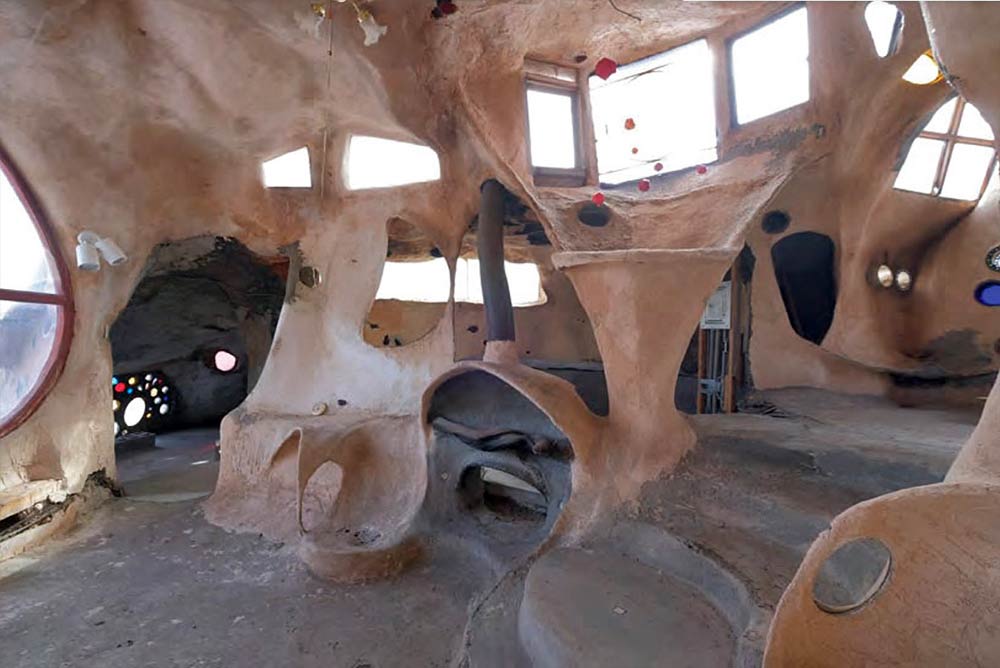
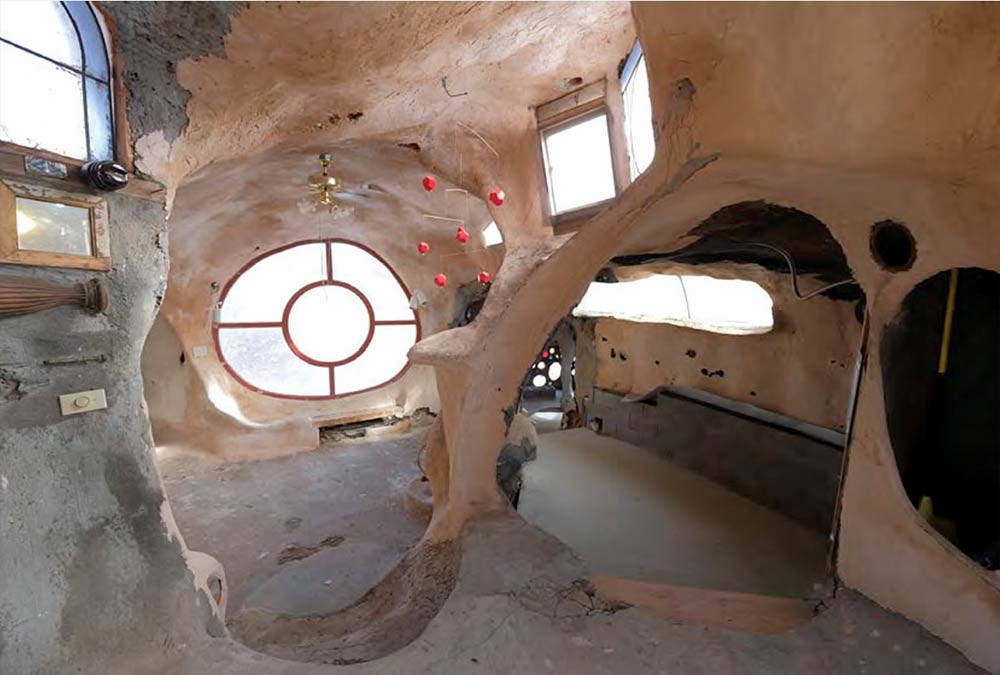

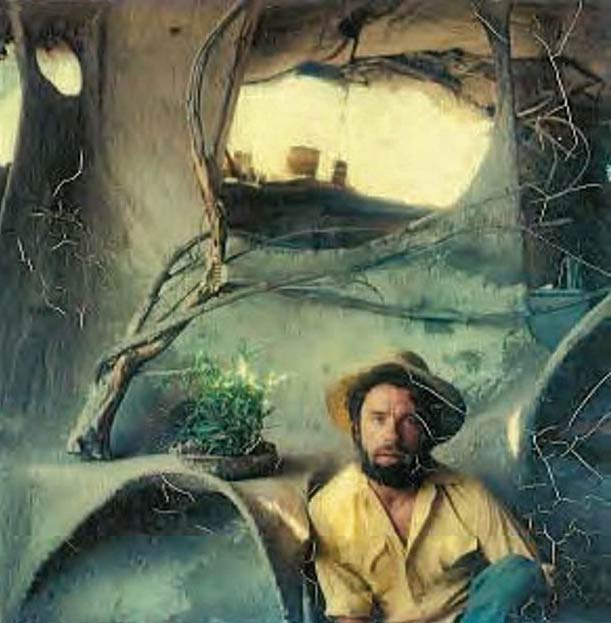
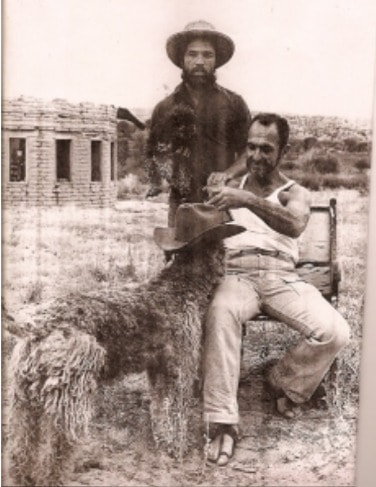
 RSS Feed
RSS Feed